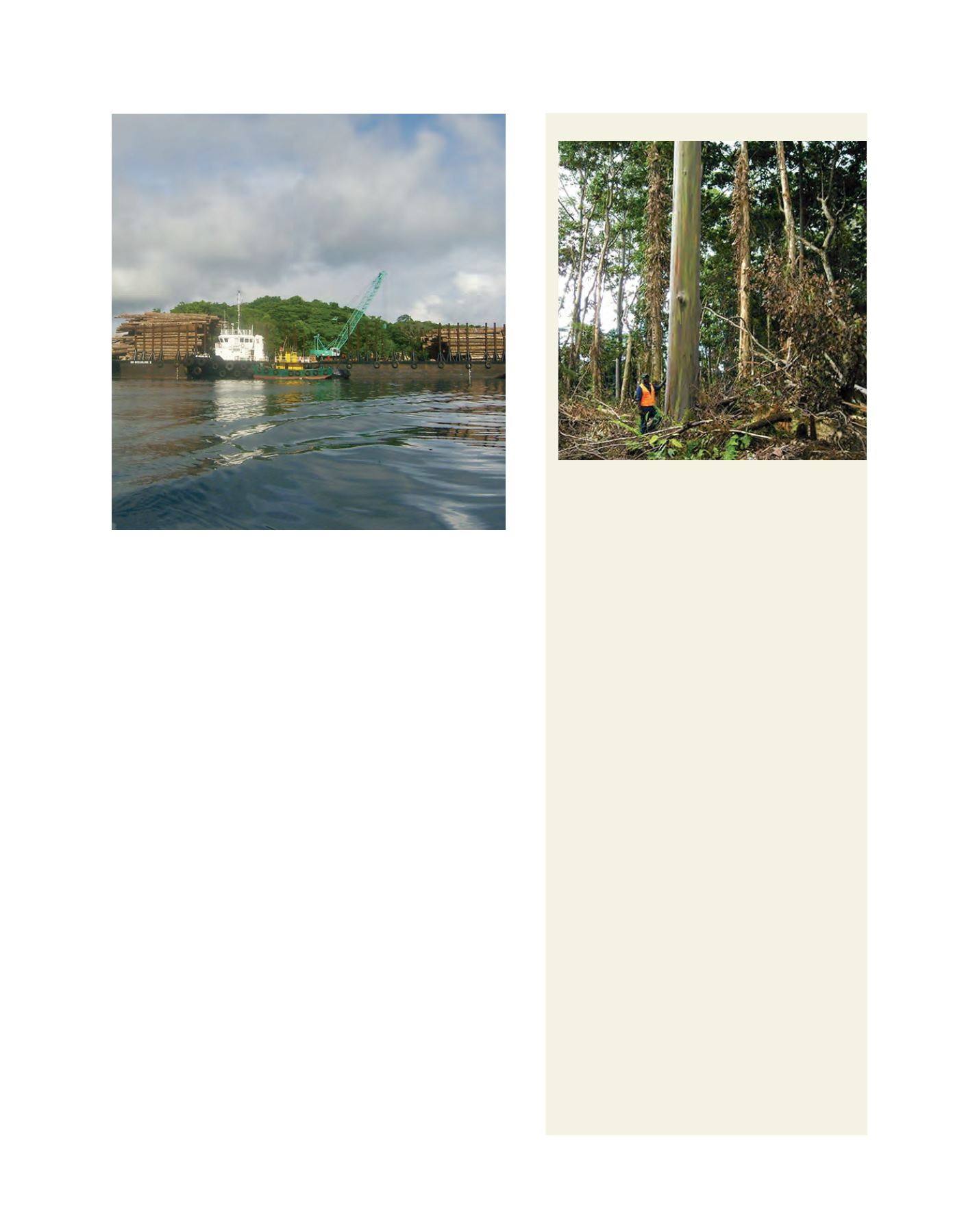

[
] 145
managers contribute valuable expertise. FSC and other forestry certi-
fication schemes ensure that relevant labour guidelines and laws are
enforced to promote worker health and safety. These measures also
help ensure that employment is legal and non-exploitative. Additional
livelihoods are sustained through indirect economic impacts, such as
secondary processing and export-oriented activities. While the above
benefits are important for supporting stakeholders and promoting live-
lihoods, forestry investors must be aware of potential negative impacts.
It is possible that increasing incomes in rural areas can lead to social
conflicts due to changes in community power structures, local inflation,
and increased migration pressures.
The future of timberland investment
The case of KFPL is an early example of the potential for institu-
tional capital to generate attractive and stable investment returns
while at the same time creating and sustaining positive social and
environmental outcomes within the forestry sector as an emerging
market. As the responsible investment movement matures, more
and more investors are looking beyond merely avoiding negative
social and environmental impacts associated with their investments;
these investors are now actively seeking opportunities to catalyse
sustainable outcomes. With direct connection to ecosystems,
consumer goods and rural livelihoods, the forestry industry offers
ample potential for such sustainability-oriented investing. At the
same time, the socio-environmental management of forest areas and
plantations can directly improve the bottom line via risk mitigation,
increased efficiency and long-term asset appreciation. As institu-
tional investment in timberland expands its reach beyond the North
American market, these opportunities for aligning commercial and
socio-environmental returns are becoming more pronounced and
allowing for transformative investment strategies in the forest sector.
Kolombangara Forests Products Limited
The case of Kolombangara Forest Products Limited (KFPL)
in the Solomon Islands demonstrates how private capital
and a sustainable investment approach can yield substantial
benefits. KFPL was established in 1989 by the Government
of the Solomon Islands, represented by the Investment
Corporation of the Solomon Islands (ICSI) and the United
Kingdom’s development finance institution, then known
as the Commonwealth Development Corporation or (CDC).
While the Solomon Islands have experienced widespread
harvesting of their native tropical forests, KFPL was created
as an example of integrated conservation and development.
The 39,000-hectare KFPL estate comprises 12,000 hectares
of hardwood plantations, including gmelina
eucalyptus
, teak,
mahogany and other species, and over 25,000 hectares
of natural rainforest under conservation and natural forest
management. KFPL’s operations achieved FSC certification
in 1998, the first in the Pacific Islands.
In 2006, a majority shareholder position in KFPL was
acquired by New Forests on behalf of an American
investment fund, and CDC (at that stage renamed
CDC Group Plc) exited the investment. The new deal
was supported by a grant that enabled the Investment
Corporation of the Solomons Islands to maintain its share
in the company. At that time, KFPL employed more than
200 people with approximately 700 additional employment
positions for contractors. KFPL’s status as a producer of FSC
wood was a critical factor in the acquisition, as it provided
assurances on social and environmental management to the
institutional investors.
The 2006 investment provided additional capital resources
to help the plantation company meet its potential as a
producer of tropical plantation hardwoods. The investor
looked at long-term strategies and was able to cover short-
term debt, enabling KFPL to invest in new equipment and
resources to improve its production and become more
efficient. The new investor was also able to bring the latest
forest management expertise drawing from worldwide
experience to modernize the systems at KFPL. This included
improved description of the resource, updating the forest
information, account systems, and databases to enable
accurate analysis and reporting. These measures enabled
better strategic and operational decision-making that
ultimately improved the asset value and ensured that
KFPL remained a strong example of sustainable forestry
investment yielding multiple local benefits.
Logs are loaded for shipping from the Solomon Islands to Viet Nam, sold to a
furniture manufacturer seeking FSC-certified timber
Image: KFPL
A KFPL employee near a 20-year old plantation
eucalyptus
tree
about to be harvested near the edge of the buffer reserve
Image: KFPL
















